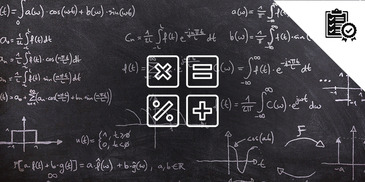
This lesson is the sequel to Towers! Towers! Towers! 1-5. Students continue to develop their sense of quantity as they build successive taller towers.
- Subject:
- Mathematics
- Material Type:
- Lesson Plan
- Provider:
- BetterLesson
- Date Added:
- 12/01/2022


This lesson is the sequel to Towers! Towers! Towers! 1-5. Students continue to develop their sense of quantity as they build successive taller towers.

Students will translate between the written form and algebraic form using correct mathematical notation.

Identifying 2D shapes in common objects and sorting according to shapes connects the real world to learning shape names and attributes.

Students will be able to practice working with triangles in different orientations, students will illustrate a "real world" triangular object, & build craft stick triangles.

Kindergarteners love to identify shapes in their environment. In order effectively do that, they must be able to recognize different shapes by their specific attributes. In this lesson kindergartners learn about different types of triangles.

What is the lowest elevation in United States? How would you represent it as an integer?

Students develop their understanding of multiplication by grouping objects into equal groups to model the factors and products.

Using a tape diagram is one of the key models for ratios and proportions.

Students will be able to demonstrate how much they have learned and retained during the lessons presented for unit 1.

It is important to assess students periodically to plan for future lessons to meet student needs.

Move over Van Halen because today we are all going to "Jump." So go ahead and jump as students solve an assessment piece and story problems involving jump lengths. If you are under 30, please Google Van Halen before proceeding.

What's the best deal? How do you represent equivalent amounts? Students work on these questions as they wrap up Unit 2.

What have students learned over the course of Unit 1? Students apply their knowledge of multiples, factors, order of operations, and equivalent expressions to review for the unit test.

Students review for the Unit 2 test by completing stations.

What have students learned during this unit? What gaps do students have in their understanding? Students take the Unit 2 test.

It is important for students to learn to compare the size of the same fraction units as the size of the whole amount changes.

Students will solve word problems to create their own subtraction number sentences. They will use known addition facts to solve subtraction problems. A detailed lesson plan, worksheet, and pictures/videos of the lesson being modeled are included.

In this lesson students will use color tiles to measure classroom objects.

Patterns are prevalent in all levels of math. Common Core Standards expect students to be able to use structure - like that found in repeating the patterns of odd and even numbers or counting by 5s or 10s - to solve problems (MP7).

In this multi-day activity, students make 3 different models of an orphanage floor plan using Google Drawing, Virtual Graph paper, and a construction of rectilinear shapes, to calculate the area of each room using units square.